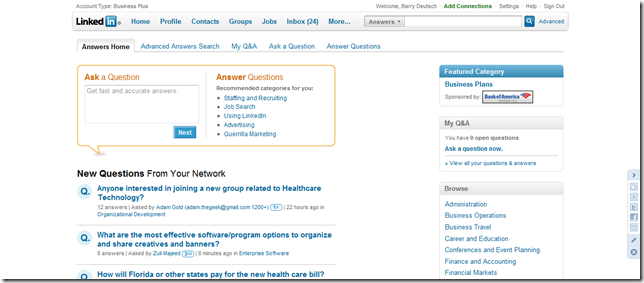How To Get Job Lead Referrals. 3 Simple Steps
I preach all the time how important it is in a job search to have a steady stream of job lead referrals coming from your network. Few disagree with this. Few also do much about it. Oh they go through the motions, they generate a lot of activity, they meet a lot of people, and they go to so many networking groups they have lost count. Yes, even after all that activity, one of the biggest issues I have to help candidates with is getting referrals from their network. In fact, most of the people that come to me requesting job search help, this is the catalyst that starts our relationship.
The conversation often begins,”I have been looking for X number of months with very little results. I’m actively networking, meeting people all the time and just not getting the right referrals or leads. Can you help me?”
This person hasn’t built a sales force. They’ve built a lot of contacts, but every top sales person knows few contacts buy anything. Connections and a relationship often result in a sale.
So here is the proverbial $64,000 question for you, “How many sales reps do you have out in the field selling you?” If you answered 50 or more you can move on to the next article. If you answered, “I don’t know.” Here is how to find out, “Are you happy with the quality and quantity of the job lead referrals you are getting?” If no, read on. If yes, move on.
I find that most job seekers have less than 15 (usually around 10) really solid job lead referral sources in their network. Most are getting referrals to other people, usually service providers, but not job leads. Few are tapping into the hidden job market.
The people I work with have a goal of 50 sales reps. I call them sales reps, because every candidate needs to have at least 50 people in the market place promoting and selling them every time a job lead or potential job lead comes up. The larger the geographical area, the larger the number of sales reps required.
My all time favorite line that best describes effective networking was given to me years ago by a person that understood networking before networking was even a word. Bill Ellermeyer said to me,”You have to take a contact and turn it into a connection.” Read it again if you didn’t pick up on what real networking is all about. This hits the problem square on the head.
Job seekers are not making connections, most are making contacts. Many don’t even know if the contact is willing to refer them or not.
So start turning all those contacts into connections. 50 great connections are worth more to you than 500 contacts. So start focusing on getting the 50.
Some ways to do that include:
- Network with a purpose. Stop going to every networking meeting on the planet. Stop meeting every person referred to you. Start going to networking meetings that will provided you the connections you need to get job leads. If the meeting isn’t going to meet this goal, why go? Do your homework before spending a lot of time with someone. Ask the referring sources some qualifying questions about the person and why they think this person would be a good referral source for you. Don’t just run off and spend all that time meeting a bunch of people.
- Select or target the people that can help you and eventually you can help them. Generally, if it is a service provider you are trying to make your sales rep, they want business referrals. They want to meet decision makers. So you should have a list of people you are relying on for help and find out from them exactly what types of business referrals they want. Stop asking the question, “How can I help you?” Every service knows that rarely leads to anything. You want referrals so do they. So ask them, “What business introductions can I make for you?” Have your rolodex with you. Open it up right there and give a good referral. They now owe you.
- Follow-up with these people regularly. Every sales manager knows you have to keep in-touch with your sales reps and with the customer. So you need to do the same thing. Since you know the backgrounds of the people they want to meet invite them to meetings, introduce them to a potential referral over coffee with you there to make the introduction, call and inquire if hey would be interested in meeting this person or that person, invite them to a social event, golf, sporting event, drinks, conference. Maybe they would like to meet one of your other 50 sales people so they can network together. Why not set up a small group meeting. There are so many opportunities to take this contact and turn it into a connection once you start thinking about it. The problem is very few think about it.
It only takes the ability to focus on the right things that will lead to quality job leads. I can tell you from personal experience, when I can get the candidates I work with in this mode most see quality job leads start coming in. Having a sales force is critical to a successful job search.
So please go out today and start building your sales team.
For a FREE example of a cover letter CLICK HERE.
For a FREE example of a Thank You letter CLICK HERE.
For many more FREE resources and articles, join our Job Search Networking Group on LinkedIn. 5200 people have done this. CLICK HERE to join.
If your LinkedIn profile doesn’t demonstrate you are the expert in your field you may be missing opportunities. Recruiters, HR and hiring authorities often start looking on Linkedin. This tool is critical in a job search. CLICK HERE to learn how you can build an outstanding Linkedin Profile.
I welcome your thoughts, comments, suggestions and ideas.
Brad Remillard











